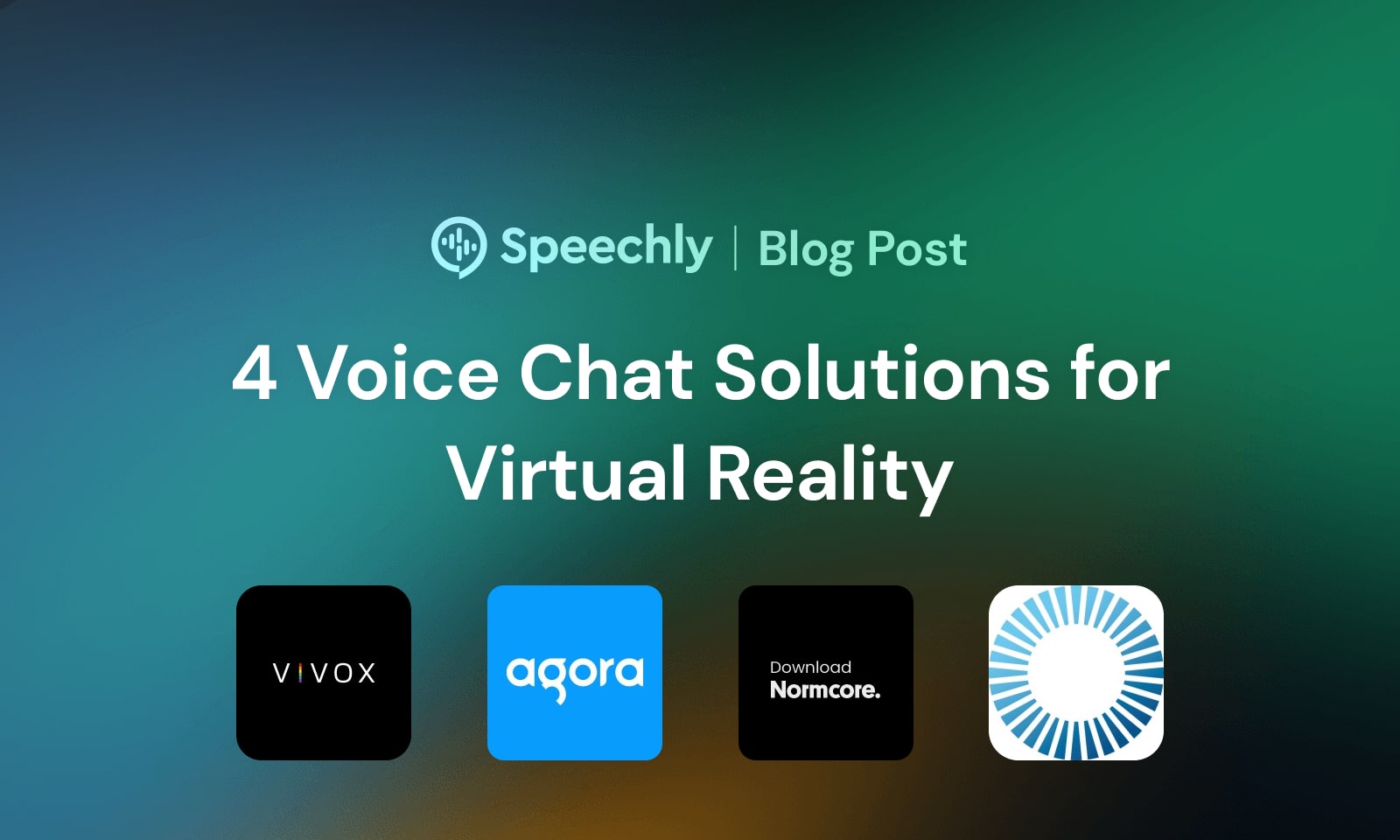Hannes Heikinheimo
Sep 19, 2023
1 min read
Blog
Voice chat has become an expected feature in virtual reality (VR) experiences. However, there are important factors to consider when picking the best solution to power your experience. This post will compare the pros and cons of the 4 leading VR voice chat solutions to help you make the best selection possible for your game or social experience.

Earlier this month, Apple introduced the Vision Pro at their 2023 Worldwide Developer Conference, reinvigorating the conversation around virtual (VR), augmented (AR), and mixed (XR) realities. With Meta’s Quest 3, the sequel to the world’s most popular headset, due out this Fall it’s an exciting time for developers to bring new virtual world experiences to market. In the last few years, popular multiplayer games such as IRL Studios’ Gym Class, Ramen VR’s Zenith: The Last City, and Big Box VR’s Population: One have reached millions of players and critical acclaim. Social connected experiences like VRChat’s VRChat Plus and Rec Room are incredibly popular with millions of active users a month. VR as a platform continues to attract consumers: the market is on track to grow 50% in 2023.
Each of the above titles shares a common thread: real-time communication. Voice chat presents a fantastic solution to this problem, seamlessly fitting into the interaction paradigms of VR, preserving immersion, and boasting a low learning curve. Voice chat is simply a must-have for collaborative VR experiences. Hosted solutions, where vendors operate and maintain the services, strike a good balance between flexibility, capability, and total cost of ownership. Additionally, the Unity engine remains an exceptional choice for VR developers due to its extensive cross-device support and rapid iteration capabilities. We’ll briefly explore the advantages and weaknesses of four popular Unity-compatible hosted solutions.
Voice chat support requires careful planning. Like most design considerations, the earlier in the project life cycle the easier it is to adapt and adjust. A common mistake is for a developer to put “voice chat integration” on a schedule late in production, only to find the chosen solution is hard to integrate cleanly. So before you begin, carefully consider these areas:
With the above considerations in mind, let’s look more closely at 4 popular services on the market today. All solutions are client-server architectures, with support for spatial audio.
| Vendor | Pros | Cons |
|---|---|---|
| Photon Engine | - Simple API that is friendly to Unity development best practices like prefabs and drag-and-drop development - A simple but realistic sample - All relevant documentation is online and publicly accessible - Full integration into the Unity audio subsystem - Web-based service health dashboard | - The free tier is very limited with a hard cap - Only Magic Leap and HoloLens VR platform support (at the time of this writing) - No explicit uptime or maintenance window guarantees |
| Vivox | - Nearly unlimited number of users and user groups - Web-based developer portal with usage data, SDK downloads, and more - Generous free usage tier of up to 5000 peak users a month - Robust SLA with 99.9% uptime - Support through forums and help desk, with paid professional support available | - Developer portal is behind a login, restricting search engine results for documentation and best practices - Custom audio capture and playback offers limited integration into Unity’s audio subsystem - No expliict VR support - Unity sample is limited |
| Agora | - Large number of supported platforms - Step-by-step instructions with cut and paste ready code for common tasks - Simple pricing model with per minute costs, with discounts available - Robust knowledge base and active forums | - No ready-to-use sample - Unity integration lacks prefabs, editor support, and other ecosystem comforts - No explicit VR support |
| Normcore | -Unity exclusive means top notch integration and development experience for Unity developers - Explicit XR support and Unity audio integration with detailed information in articles like XR Avatars and Voice Chat - Documentation is simple, search engine indexed, and accepts community fixes - Robust web dashboard for tracking usage and app integrations - Support through email or Discord | -No explicit uptime or SLA - Free tier is limited to 30 users, 10 rooms, and 1 hour which is unsuitable for production use |
These four solutions are solid options to consider, and are fast and easy to use in experiments. Virtual experiences are better in every way with voice communication, and it’s never been easier to get started with a third-party solution. With voice technology in place, exciting capabilities like real-time transcription, tonal analysis, recording, or other moderation techniques are achievable and lay a foundation for immersive, exciting virtual worlds.
* Matt is a veteran technology leader in and out of the gaming industry with contributions to games like Red Dead Redemption and Marvel Puzzle Quest. His most recent stint was at Vivox, a Unity Technologies brand, helping to bring voice chat to mobile and VR platforms. He writes about these topics as well as practical leadership lessons at thelead.beehiiv.com.
Speechly is a YC backed company building tools for speech recognition and natural language understanding. Speechly offers flexible deployment options (cloud, on-premise, and on-device), super accurate custom models for any domain, privacy and scalability for hundreds of thousands of hours of audio.
Hannes Heikinheimo
Sep 19, 2023
1 min read
Speechly has recently received SOC 2 Type II certification. This certification demonstrates Speechly's unwavering commitment to maintaining robust security controls and protecting client data.
Markus Lång
Jun 01, 2023
1 min read
A recent NYU report exposes how extremist actors exploit online game communication features. In this blog we expand on NYU's data and recommendations for maintaining safety and security in online gaming communities.
Collin Borns
May 30, 2023
4 min read